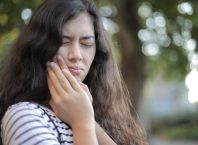These days, you are likely to come across a lot of talks about “non-sunscreen” agents being used to provide protection against ultraviolet radiation (UVR). These agents are quite different in their action mechanism in comparison to the protection provided by regular sunscreens and other SPF products. Through this article, we aim to throw light on the efficacy of these non-screen type products, how antioxidants are helpful in controlling the damages inflicted by the sun on your skin. And how to avoid excessive UV exposure. Read on to know about alleviating the concerns of sunburn through safe, non-cosmetic means.
Contents [show]
Sunscreen Products and Other Products
Skin damages can be reduced by avoiding long and excessive exposure under the sun. Proper use of sunscreen and clothing can also reduce the worries of getting a bad tan or damaging your skin beyond repair. Earl Hailey from PatchMD.com says that getting enough antioxidants may not eliminate the chance of getting a sunburn, but it will help protect your skin against damage from the sun. It’s important to note that there are no such sunscreen lotions, gels, or creams that cam eliminate UVR exposure completely or under any scenario. Though sunscreens are helpful for preventing the damages caused by the UV rays of the sun, it is essential to take further topical measures to reduce the fears of skin cancer, photoaging, and other sun-damage related problems.
According to dermatologists, active natural ingredients can safely augment sunscreens and enhance their photoprotective qualities to provide more protection against sun damages. A lot of research is underway to understand these non-sunscreen ingredients, their proper concentration for use, the right mix of materials, etc. If used as per recommendation, these products can prove to be quite beneficial for the human skin.
Antioxidants and Their Role in Blocking Sun Exposure Damages
In the process of blocking certain damages caused by sun exposure, specialists are exploring the role of antioxidants for dealing with UVR-created oxidative stress. The systematic and topical antioxidants for this purpose include, but are not restricted to, vitamin C, (-)-epigallocatechin-3-gallate, resveratrol, retinyl palmitate (retinoids), and vitamin E. Some of these antioxidant-rich materials are categorized as plant extracts; they’ve been reported to reduce the concerns of UVR-induced damages and their endpoints.
Non-sunscreen Extracts and Effective Antioxidants
Experimental pieces of evidence have supported that certain extracts, such as tea extracts, specific flavonoids, lutein, tamarind, pycnogenol, fern extracts, and lycopene are helpful for the purpose of protecting the body from damages. Recently, there have been reports on the efficacy of topical DNA repairing enzymes that prevent UV-induced immunosuppression. The application of these repair enzymes in their topical form is found to be impactful only after exposure to UV rays. As per experts, these enzymes may serve to be an important weapon in the future for waging a war against UVR-induced skin cancer.
Patches – Revolutionary Products for Keeping Sun Damages at Bay
You may want to check out helpful skin patches that provide resistance to the damages inflicted by ultraviolet radiation. They combine several natural compounds and nutrients, along with their antioxidant properties, to provide protection against sun damages. You may also include these patches as an important part of your anti-aging skincare regime.












